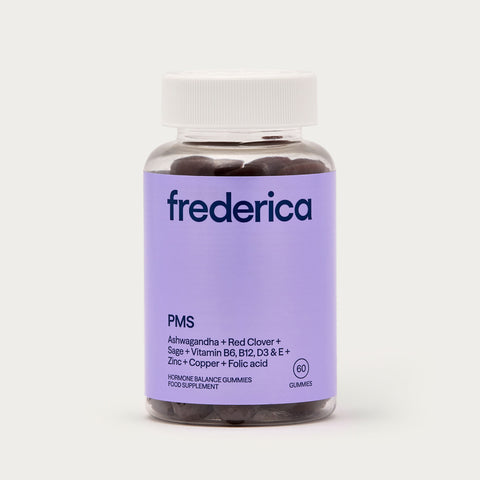Menstrual cramps can range in intensity—they can simply be a mild discomfort lasting just a day, or they can be several days of unbearable pain that interferes with our daily activities. The main culprits are uterine contractions, which occur immediately before or during the onset of menstruation. But what makes these cramps more severe for some of us?
Menstrual pain typically begins as a throbbing pain in the lower abdomen. However, in more severe cases, the pain can radiate to the lower back and inner thighs, and a constant, dull ache or pressure may be felt in the area.
Lasting two to three days, these cramps can be accompanied by other symptoms, including nausea, fatigue, headaches, and dizziness. Even so, this type of cramping is still the most common and usually resolves with the use of a pain reliever. The problem arises precisely when one pill isn't enough to stop the problem.
What are the signs of more intense menstrual cramps?
This type of cramping tends to begin earlier in the menstrual cycle and lasts longer than typical cramps. Generally, these cramps don't improve with over-the-counter pain relievers and are so severe that they significantly interfere with a woman's daily activities, often accompanied by heavy bleeding or clotting.
What causes this type of pain?
During your period, the uterus contracts to help shed its lining. These contractions are triggered by prostaglandin-like substances (hormones found in various body tissues). However, when these hormones are present in higher levels, menstrual cramps become more severe.
The cause of pain isn't always clear, as some people tend to experience more painful symptoms for no apparent reason. However, in other cases, this condition may be a symptom of an underlying medical problem, such as endometriosis.
According to Healthline , endometriosis is a condition that causes the tissue that normally lines the uterus to grow in other parts of the body, outside of the uterus, resulting in severe pelvic pain (the most common symptom). From there, other problems can arise, including:
- Menstruation lasting more than seven days;
- Heavier menstruation;
- Polycystic Ovary Syndrome (a common hormonal disorder that affects approximately one in ten women of childbearing age);
- Pain during sexual intercourse;
- Painful bowel movements;
- Difficulty getting pregnant.
Another possible cause of severe menstrual pain is the use of a hormonal IUD (a birth control device that is inserted into the uterus), which can also cause irregular periods and heavy menstrual bleeding.
How to detect the cause?
The best way to understand what might be triggering a deeply painful period is to make an appointment with your doctor, especially if cramps last more than three days.
Therefore, by reviewing your medical history and performing a physical examination, the cause of the pain can be understood. In some cases, it may also be important and necessary to perform procedures that provide a detailed view of the reproductive organs or even surgery to confirm a possible diagnosis of endometriosis.
Don't accept pain that affects your quality of life!
The truth is, you don't have to suffer from severe menstrual cramps, nor do you have to let them interfere with your well-being and hinder your ability to continue living your daily life.
Along with trying to resolve this issue with medical help—something that will create a fundamental plan for you to overcome the issue—you can always follow some of the following tips:
- Although painkillers can do little for more severe pain and aren't enough to eliminate it completely, taking one of these medications the day before you start feeling pain—ibuprofen, for example—may be more effective. You can also choose to take supplements rich in magnesium, omega-3, or vitamins B1 and B6;
- Place a heating pad on your lower abdomen for pain relief;
- Exercise (some studies suggest that exercising for 30 minutes three times a week can significantly reduce the severity of menstrual cramps over a few weeks);
- Avoid stress – do breathing exercises, yoga or meditation;
- Take a warm bath to soothe your lower abdomen and back.



































